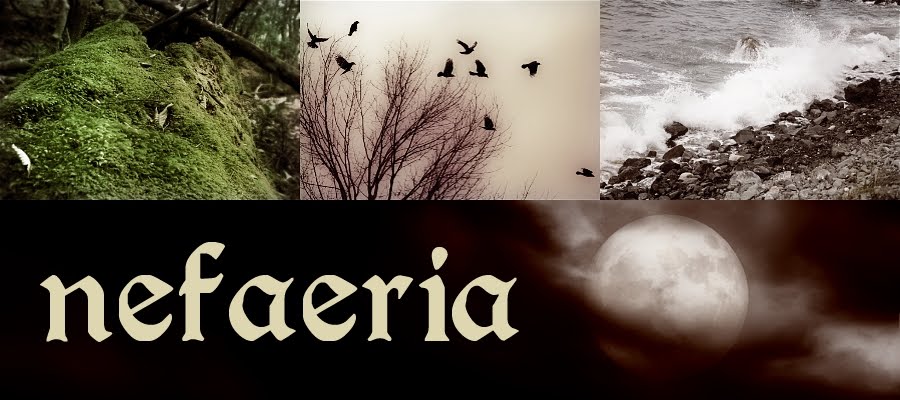
From Flora von Deutschland
I couldn't do a profile just before Christmas, without doing one on holly as well! Just as with mistletoe, there are plenty of different varieties of holly, but for this post I am focusing on the European holly (Ilex aquifolium).
Other Names: Tinne, Cuileann, Christ's Thorn, Hulver Bush, Hulm, Holme Chase, Bat's Wings.
Description: European holly is an evergreen tree or bush that is native to most of Europe, as well as some parts of Africa and Asia.
It can reportedly grow up to 25 m tall, but takes quite a long time to reach maturity. The leaves are smooth, shiny, and variable in shape; often they resemble jagged teeth and are about 5 to 10 cm long and 2 to 5 cm wide.
The flowers are white and dioecious, and the berries are that signature red.
Warnings: As with all herbs, one should make sure to be thoroughly informed before ingesting them, and is best to do so under the guidance of a qualified healer.
The berries are toxic and if enough is ingested, it can cause death. Other parts of the plant can be toxic as well. Beside fatality, more likely unpleasant side effects can include vomiting, diarrhea, and a dopey state.
Avoid ingesting if you are pregnant or nursing.
Photo by Emilio del Prado
Cultivating: European holly's natural habitat is usually a woodland setting that is inhabited by trees such as oaks, poplars, and elm.
Saplings can be readily bought in stores and garden centres, and should be planted in the ground once there is no risk of frost. It prefers partial shade, and well-drained, fertile soil that is a little acidic. Mulching is a good idea.
It flowers around May, and if you want berries you will need to plant male and females within 100 feet of each other. It is hardy to about a zone 5 and is frost tender.
Medicinal/Remedial Properties and Lore: Astringent, bach, diaphoretic, diuretic, emetic, expectorant, febrifuge, purgative.
At one time holly infusions were used for pleurisy and smallpox, and was used to help calm fevers and symptoms of rheumatism.
Culpeper thought that it was an excellent cure for colic, and good for mending broken bones. Brother Aloysius also thought it helpful for colic, as well as gout and fevers.
The medicinal properties are rarely harnessed by modern herbalists, but Dr. Edward Bach created an essence made of holly for hatred, anger, and jealousy which is still used today. He wrote of holly essence 'For those who sometimes are attacked by thoughts of such kind as jealousy, envy, revenge, suspicion. For the different forms of vexation. Within themselves they may suffer much, often when there is no real cause for their unhappiness.'
Magical Properties and Lore: According to many different sources, holly is one of the sacred trees of the Druids, and as previously mentioned in my mistletoe post, it may have actually been holly that Cesar had seen being harvested by Druids with gold sickles 5 days after the new moon of Yule.
In Celtic Tree Magic by Elizabeth Pepper, she claims that along with the oak and ash, holly were favoured trees in the groves where Druids worshipped. She also makes a connection between the battle of Sir Gawain and the Green Knight with the battle of the Oak King and Holly King:
'...the oak and the holly trees are two Divine Kings, one representing the waxing half of the year when the sun rises to its height at summer solstice, the other as symbol of the waning cycle as the sun retreats to its lowest point at midwinter solstice. The Celtic myth of Sir Gawain and the Green Knight has the two opponents meeting in combat at midsummer and midwinter. Gawain carries a club of oak. The Green Knight's weapon is a bough of holly.'
By some it is thought that the custom of hanging boughs of holly to decorate homes at Christmas originated in ancient Rome where they would 'deck the halls' for Saturnalia.
Holly has long been noted as a herb of protection; Pliny said, 'the branches of the tree defends houses from lightening and men from witchcraft.' Holly can also be planted around one's home to protect against being blasted (cursed).
It is sometimes associated with divination. In Northern Europe, a charm was made to encourage dreams of one's future spouse. One would go out on a Friday at midnight and collect 9 holly leaves, and then tied with nine knots with a pure white 3-cornered handkerchief (Encyclopedia of Superstitions, by Edwin Radford).
Holly is considered sacred to the Dagda and the Goddesses Banba, Macha, and Danu.
A vintage holiday card from The Graphics Fairy
Other Uses: Holly wood is excellent for wands, and wood carving art.Sláinte!
Laurel


No comments:
Post a Comment